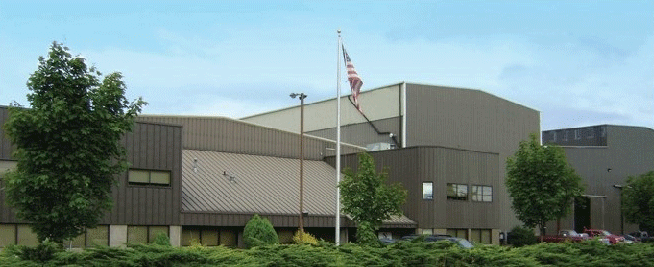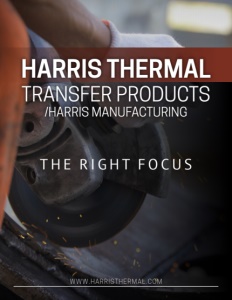Harris Thermal Transfer Products/Harris Manufacturing
The right focus
Business View Magazine interviews representatives from Harris Thermal Transfer Products, as part of our focus on industrial process equipment manufacturers.
Harris Thermal Transfer Products was originally established as Harris Ice Machine Works by Henry E. Harris in 1885, in Newberg, Oregon. In its early days, the company produced ammonia refrigeration systems, including compressors, evaporators, condensers, chillers, cold boxes, and controls. This early production of heat exchanger equipment led to the company’s current emphasis on the design and manufacture of custom industrial process equipment, including shell-and-tube heat exchangers, pressure vessels, fractioning columns, vacuum vessels, evaporators, condensers, storage tanks, autoclaves, and vibratory mills. Construction materials include – but are not limited to – all nickel and high nickel alloys, stainless steels, titanium, zirconium, copper, and copper alloys, as well as carbon steel alloys.
Harris Thermal Transfer Products operates out of a 50,000-sq.-ft. fabrication facility in Newberg, with an additional 48,000 square feet of fabrication floor space located at the Port of Portland, with access to river barge and ocean cargo shipping, as well as cargo rail. In 2014, the company, under the ownership of Arnold Fuchs, established a sister company, in Bonner, Montana – Harris Manufacturing – adding another 36,000 square feet of fabrication space. Harris Manufacturing was established in order to help Harris Thermal Transfer Products expand its business reach to the Midwest and Eastern United States, as well as the Canadian Provinces of Alberta, Saskatchewan, and Manitoba.
Together, the companies have customers across the globe in the following sectors: petrochemical, pulp and paper, water treatment, piping and ducting, modular plant construction, and nuclear. “Basically, we’re both ASME-code manufacturing facilities,” says General Manager, Eric Groenweghe. “Between the two companies, we have about 100 employees. “We also build formaldehyde reactors for several of the very large formaldehyde plants,” Groenweghe adds. “The biggest use of formaldehyde is in oriented strand board (a type of engineered wood similar to particle board, formed by adding adhesives and then compressing layers of wood strands in specific orientations.)”
“Another niche market for us is water treatment equipment,” he continues. “We build very large evaporators. In fact, some of them can be over 500,000 pounds. They consist of a large shell-and-tube heat exchanger with a large vapor body on the bottom of it. And we also build french-fry heaters for cooking French-fries on an industrial level for the potato industry. We also have gotten involved in some nuclear waste treatment, being close to the Hanford nuclear waste cleanup site. Over 50 vessels went to that site. We’ve also built a lot of the test reactors and simulation equipment for Oregon State University, one of the leaders in developing nuclear reactors.”

Being diversified help the Harris companies navigate the uncertainties of the marketplace; when one industry is down, another may be up. “We do quite a bit of work in the pulp and paper industry, which can be hot and cold,” Groenweghe says. “Right now, it’s cold. Water treatment is one of our biggest, by far, now. That could be ozone generators that disinfect water, or Zero Liquid Discharge systems that go into the power industry. (Zero Liquid Discharge is an advanced treatment process in which almost all wastewater from various industrial processes is treated and reused, therefore leaving behind zero effluent or liquid discharge.)”
Senior Project Manager, Josh Thatch, adds that having a diverse supplier network is also a key to staying competitive. “Over the years, we have dealt mostly with local distributors for material supply. But eight years ago, the metal industry had a little bit of a slow time,” he explains. “During that period, the local suppliers and distributors didn’t stock nearly as much material because of the volatility of the industry. So, we took some time to research and develop some relationships directly with mills that supply the different alloys that we use. We’ve dealt directly with Allegheny Ludlum, Outokumpu, ArcelorMittal – those are the main ones. We’ve also worked with some international suppliers in Korea and Japan. We’ve been as diversified as possible to help us be as competitive as we can in the industry.”
Groenweghe believes that the Harris companies have several competitive advantages across all the sectors they serve. “Our competitive edge is that we can build very large equipment,” he notes. “Many manufacturers can’t. We have, in one bay, a hundred-ton lifting capacity and we also four jets that can augment that lift capacity by quite a bit more. We do almost everything in house – all the tube sheet drilling, machining, forming, burning. We can turn up to a 16.5 foot diameter and drill up to 13’8” under gantry. And the reason that’s important is because we’re keeping everything under one roof so we have control over it. That allows us not to be held hostage by our suppliers or vendors that a lot of other companies are because they haven’t invested in the equipment.”
Going forward, Groenweghe says that keeping the Harris Manufacturing facility busy is a major priority. “We want to expand that facility as far as the amount of work going through there and add more employees,” he remarks. “It’s been a process and it’s taking a little longer because the oil industry has really affected the power sector, and that has hurt.”
Meanwhile, the company has found itself in the position of owning way more land than it needs in Bonner, with the responsibility of figuring out what to do with it. “When we purchased that facility in Montana, we purchased 115 acres – all zoned heavy industrial land,” Groenweghe recounts. “It kind of dropped in our lap. We wanted to be located in that area, this land was available, so we purchased it. The question is: what do you do with the rest of the land?”
Groenweghe answers his own query, suggesting that once he’s satisfied that the progress at Harris Manufacturing is on track, he’ll turn his attention to developing the spare acreage into a general business park. “Development has been on the back burner,” he admits. “Our first focus is our business. Anything else takes a back seat. When we’re happy with the growth of the manufacturing facility, we’ll go forward with development.”
A challenge that the Harris companies share with many other manufacturers is finding enough skilled labor to feed their intended growth. That challenge has been addressed with what Groenweghe describes as an in-house, non-formal, apprentice program. “In Montana, we’ve teamed up with two technical colleges – Helena College and the University of Montana at Missoula’s Welding School,” he reports. “We’ve been able to get their curriculum geared a little bit more towards our industry and have started pulling employees out of that educational system. We’ve done a similar thing here in Oregon with Portland Community College. At the high school level, we give tours for technical classes. We hope they remember us and if we make an impression on them, and they continue on with some further education in the community college system that we work with, then we can start pulling employees from there. And we’ve been successful doing that.”
Thatch notes that the “friendly and caring” culture at the Harris companies is an added inducement for any new workers wanting to join a successful operation. “Our owner is very family-oriented,” he states. “He cares about every one of his employees like they were part of his actual family. Therefore, this company has taken great care in how it treats its employees – the benefits its gives, how it promotes from within, and how everyone looks out for everyone’s best interests.”
Finally, although Groenweghe says that while the growth of the Montana facility is company’s number one priority, with land development at the Bonner site several years up the road, he wants to make sure that that growth is measured. “We want to be careful not to grow too fast or too big and lose sight of who we are and what got us to where we’re at,” he declares. “Our focus has always been on on-time delivery, price, quality, and customer service. That’s what our customers care about, so that’s what we should be focused on.”
AT A GLANCE
WHO: Harris Thermal Transfer Products/Harris Manufacturing
WHAT: A manufacturer of custom industrial process equipment
WHERE: Newberg, Oregon and Bonner, Montana
WEBSITE: www.harristhermal.com



